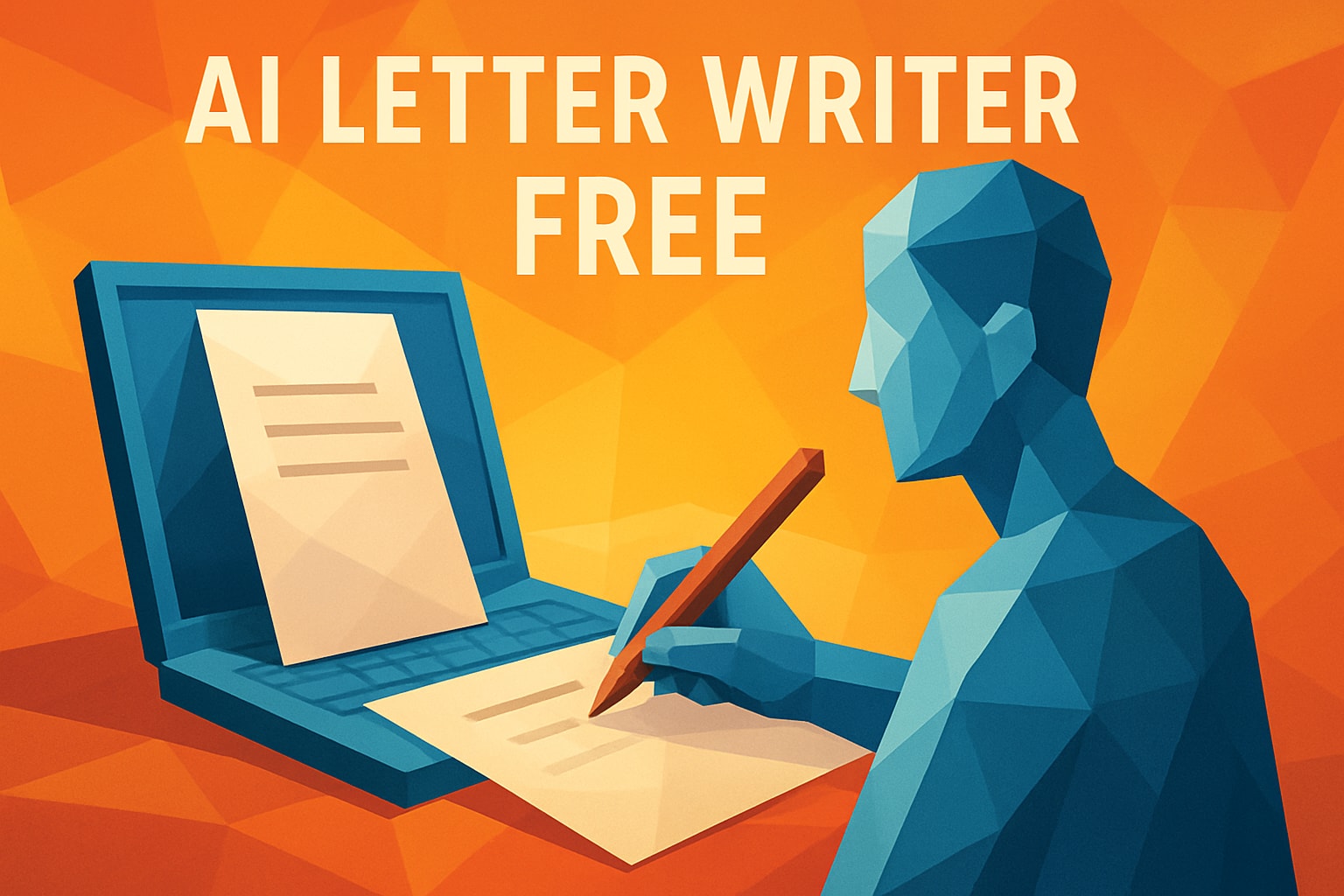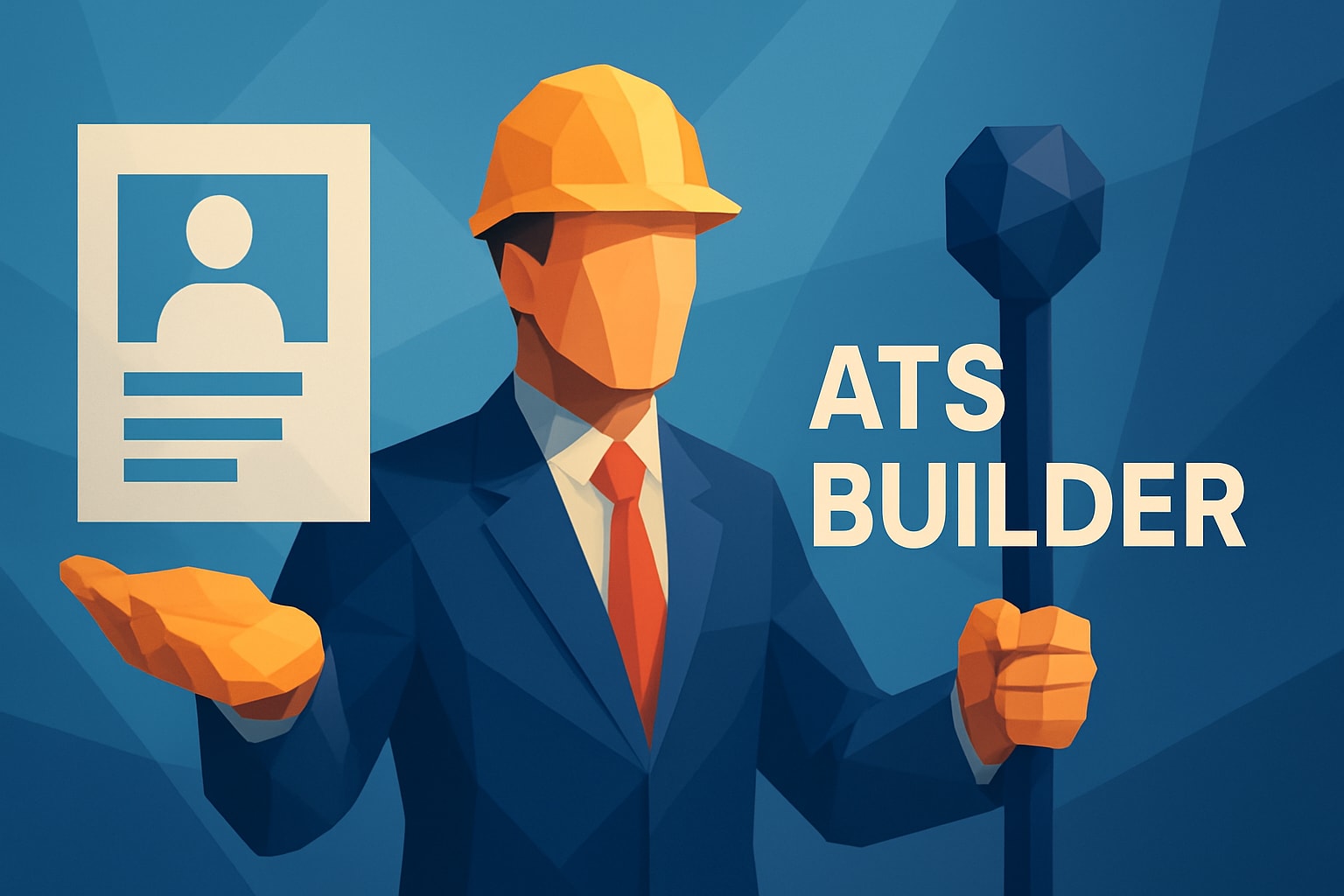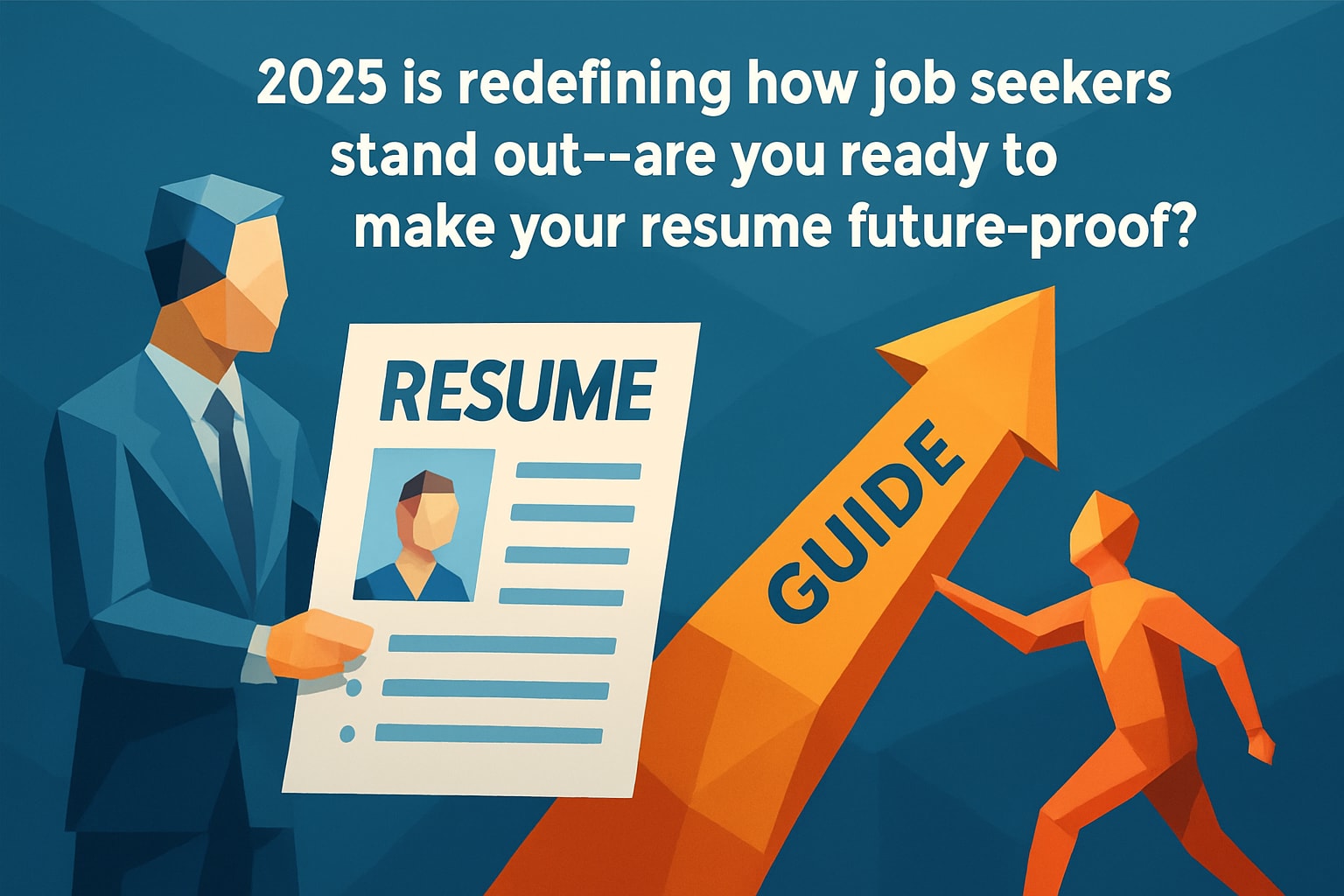- Home
- Blog
- Resume Writing
- Application Letter AI Guide: Master Your 2026 Job Applications
Application Letter AI Guide: Master Your 2026 Job Applications
Master application letter AI for 2026 job success. Discover top AI tools, expert strategies, and best practices to create standout, ATS optimized applications.
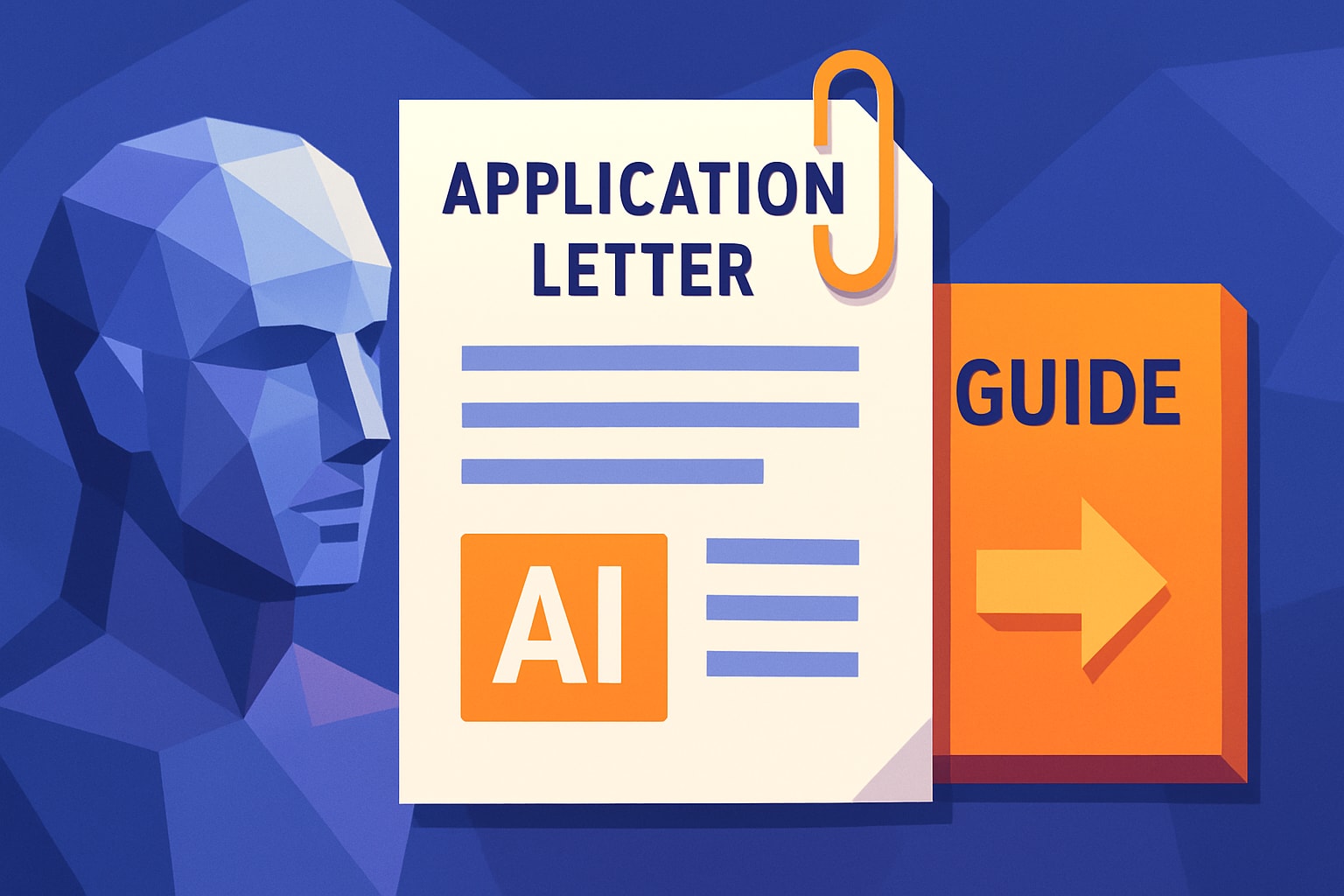
Imagine landing your dream job in 2026 with just a few clicks, thanks to the rise of application letter ai. This technology is reshaping how job seekers present themselves, making applications smarter and more impactful. In this guide, you will discover how application letter ai can help you craft tailored, results-driven letters that grab recruiters’ attention. Learn step-by-step strategies, explore best practices, compare top tools, and see what the future holds. Ready to stand out in a crowded job market? Let’s unlock your competitive edge with the power of AI.
The Evolution of Application Letters in the AI Era
The journey of job applications has seen a dramatic transformation over the past decades. Traditionally, candidates would spend hours crafting handwritten or typed letters, hoping to convey just the right mix of professionalism and personal flair. However, these early application letters often suffered from generic language, formatting inconsistencies, and limited customization, making it difficult for applicants to truly stand out.
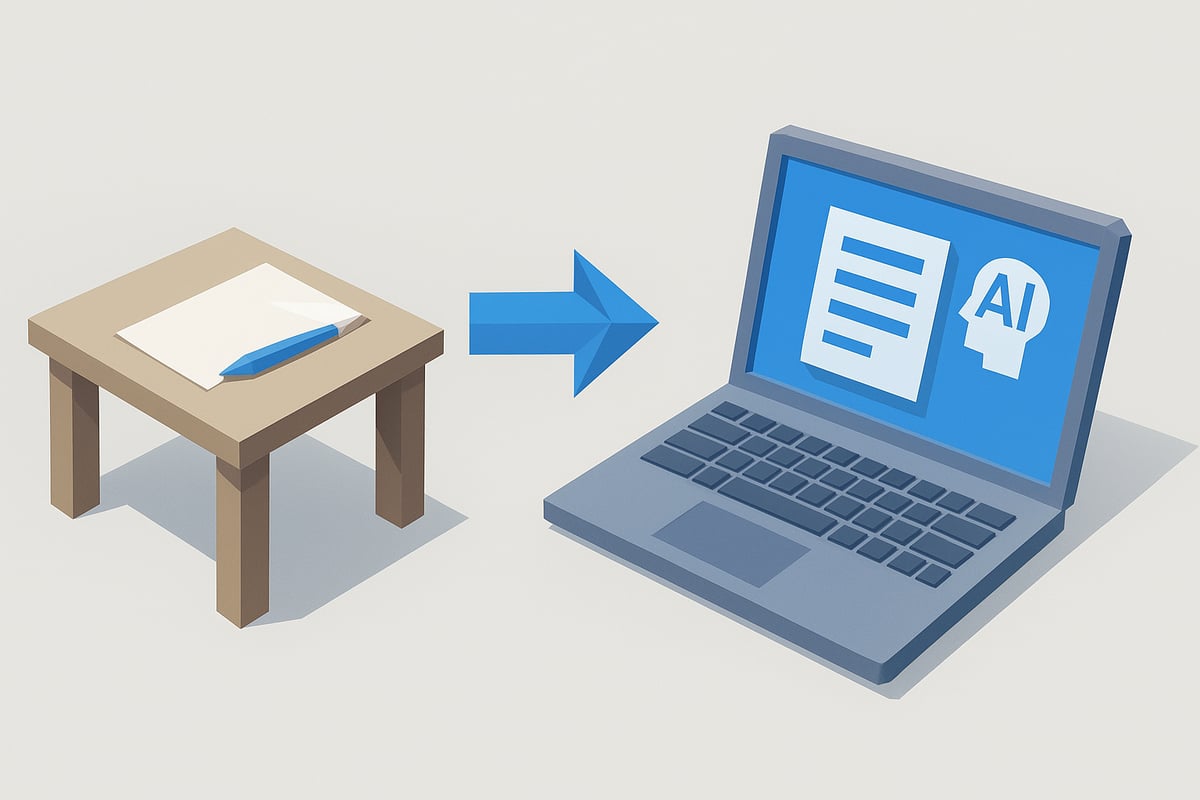
Traditional Application Letters: The Early Days
Before the era of application letter ai, job seekers relied heavily on templates or reused content. Letters often lacked personality, and recruiters faced mountains of nearly identical submissions. The process was tedious for both sides, with manual errors and missed opportunities being common.
The Rise of AI in Recruitment
The digital revolution introduced artificial intelligence into the hiring process. As early as the 2010s, companies began experimenting with automated resume parsing and keyword scanning. By integrating application letter ai, organizations started to streamline candidate shortlisting and reduce human bias.
This shift did not just affect recruiters. Applicants quickly realized that tailoring their documents for AI screening was crucial. Application letter ai became a tool for customization, helping candidates analyze job descriptions and align their skills more effectively.
The Modern Landscape: AI Prevalence
Today, AI is at the core of recruitment. In fact, 95% of Fortune 500 companies now use applicant tracking systems (ATS) and AI-driven screening tools. For job seekers, this means that mastering application letter ai is no longer optional—it is essential for getting noticed.
To optimize their application letters for these systems, candidates often use resources like an ATS resume checker tool, which ensures their documents are compatible with AI algorithms and increases their chances of passing the first screening stage.
Advantages and Challenges of Application Letter AI
Application letter ai offers significant benefits:
Speed: AI can generate drafts in minutes.
Personalization: It tailors content to specific job postings.
Error Reduction: Automated checks catch grammar and formatting issues.
Yet, challenges remain. Over-reliance on AI may result in generic outputs, risking a loss of personal touch. Recruiters can spot robotic language, so a balance between automation and authenticity is crucial. Applicants must review and refine AI-generated letters to ensure their unique voice shines through.
2026 Expectations, Real-World Examples, and Impact
By 2026, employers expect application letter ai to deliver tailored, data-driven, and authentic content. Candidates are now judged on their ability to leverage AI tools while maintaining individuality.
Consider this comparison:
Aspect | Traditional Letter | AI-Enhanced Letter |
|---|---|---|
Personalization | Low | High (job-specific) |
Error Rate | Moderate to High | Low (AI checks) |
Time Required | 2+ hours | 5–10 minutes |
ATS Compatibility | Inconsistent | Optimized (keyword-rich) |
A recent study found that candidates using AI-optimized application letters saw interview rates increase by up to 32%. As one recruiter noted,
"AI-powered letters are not only more relevant but also more engaging for hiring teams."
In summary, the evolution of application letter ai has revolutionized how candidates present themselves. The fusion of technology and human insight is setting a new standard for job applications.
How AI Transforms Application Letter Writing
Artificial intelligence is rapidly redefining how candidates approach the job search. In the context of application letter ai, the transformation is both profound and practical. From deep customization to rapid error checks, AI-driven tools are making the process smarter, faster, and more effective.

Personalization and Tailoring
One of the most significant ways application letter ai is reshaping job applications is through advanced personalization. AI tools now analyze job postings, company websites, and even social media to extract relevant details. This enables users to craft letters that directly address the employer’s needs.
By leveraging application letter ai, job seekers can incorporate role-specific keywords, ensuring their documents are optimized for applicant tracking systems (ATS). This targeted approach boosts visibility and increases the chances of passing initial screening. For example, an AI-generated letter for a tech role may emphasize innovation and technical skills, while one for healthcare focuses on empathy and patient care.
AI also adapts tone and style to match each industry. Whether applying to a creative agency or a financial institution, the language shifts accordingly. Data shows that personalized, AI-enhanced letters are three times more likely to secure interviews compared to generic submissions.
For actionable strategies on making your application stand out, consider reading the guide on how to write a cover letter that gets noticed, which complements these AI-powered approaches.
Efficiency and Error Reduction
Speed and accuracy are core strengths of application letter ai. Traditional application letters often required hours of drafting, editing, and proofreading. With AI, the process is streamlined, reducing creation time from two hours to just five minutes.
AI tools offer real-time grammar, spelling, and formatting checks. This ensures that each application letter is free from common errors and maintains a professional appearance. Consistency is another benefit, as users can apply the same high standard across multiple applications without manual repetition.
Instant feedback and revision features allow users to adapt quickly. If a job posting changes or a new opportunity arises, AI can update the letter in moments. Users report saving over three hours per application with these tools, making the entire process more manageable and less stressful.
Overcoming Writer’s Block and Enhancing Creativity
Writer’s block is a common hurdle, but application letter ai provides solutions. AI-powered platforms generate prompts and content suggestions, sparking ideas for unique opening lines or impactful conclusions. These tools also offer rewriting and paraphrasing features to avoid repetitive language.
For example, if a candidate struggles to describe achievements, AI can recommend powerful action verbs or help quantify results. This not only adds variety but also strengthens the impact of the letter.
Users consistently rate these platforms highly, with satisfaction scores averaging 4.9 out of 5. The creative support offered by AI transforms the writing process from daunting to inspiring, ensuring every application letter is original and compelling.
Step-by-Step Guide: Crafting the Perfect Application Letter with AI
Navigating job applications in 2026 requires a strategic approach. With application letter ai, you can streamline the process while enhancing the quality and impact of your application. Here’s a step-by-step guide to help you craft a standout application letter using the latest AI tools and best practices.
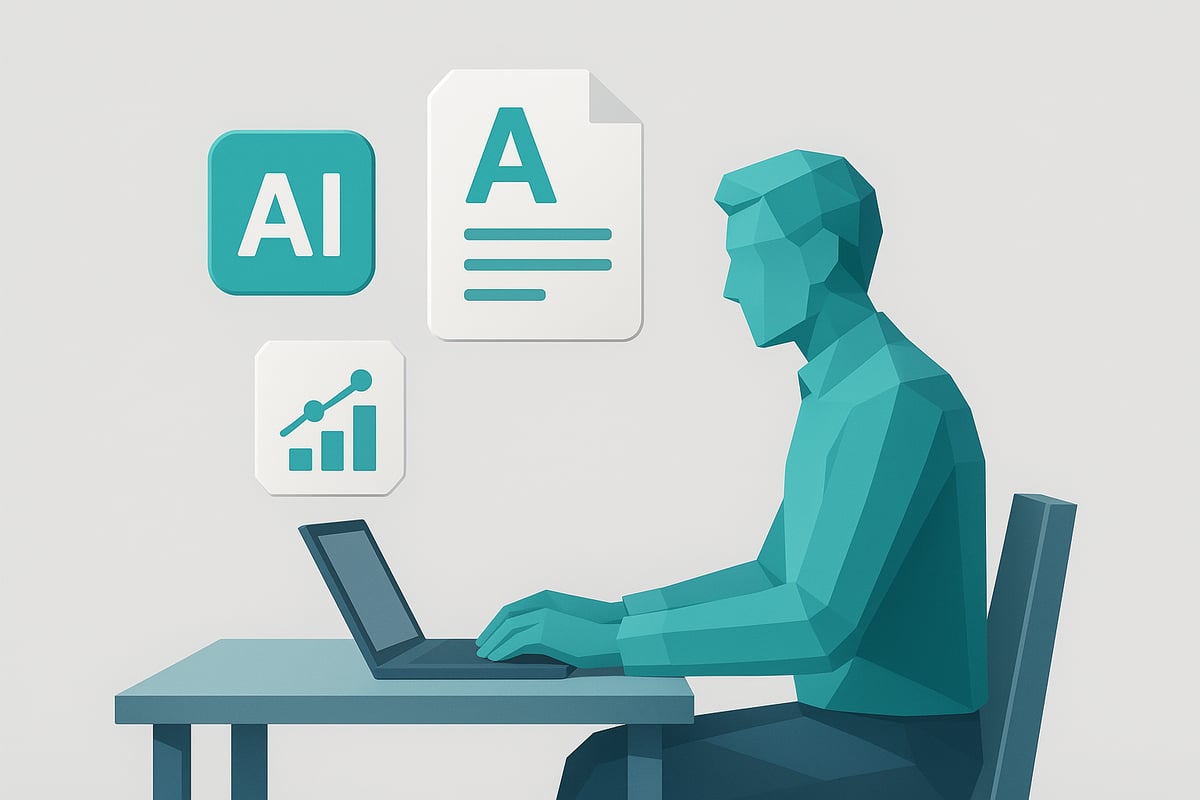
Step 1: Choose the Right AI Tool
Selecting the best platform is the foundation of your application letter ai journey. Start by evaluating tools that offer ATS optimization, strong customization, and robust privacy controls.
Key features to consider:
Built-in keyword analysis for ATS success
Customizable templates for different industries
Real-time grammar and style suggestions
Data security and privacy measures
Platform | ATS Checker | Custom Templates | Price (per month) | Privacy Focus |
|---|---|---|---|---|
Template.net | Yes | Yes | €9 | Good |
Jasper | Yes | Yes | €39 | Excellent |
Grammarly | No | Limited | €12 | Excellent |
Free versions often provide basic features, while premium plans unlock advanced AI-driven personalization. For example, Template.net offers ATS checks and custom templates at a lower price, while Jasper excels at deep customization. Choose a tool that aligns with your application letter ai needs and budget.
Step 2: Gather and Input Relevant Information
The quality of your application letter ai output depends on the data you provide. Gather your updated resume, the job description, and insights about the company’s culture.
Checklist for effective input:
Resume with current achievements and skills
Detailed job posting highlighting required qualifications
Notes on company values, mission, and industry keywords
The more precise your information, the more relevant and tailored your application letter ai will be. For example, if applying to a healthcare firm, include certifications and patient care experience. Always double-check your data before submission for the best results.
Step 3: Customize and Personalize the Draft
AI-generated drafts are powerful, but to truly stand out, you must personalize the content. Begin by reviewing the application letter ai draft for tone and clarity.
Edit the letter to reflect your authentic voice:
Add specific achievements with metrics (e.g., "Increased sales by 30% in 2024")
Mention projects or experiences closely related to the job
Adjust the language to suit the company’s culture
For instance, transform a generic phrase like "I am a hardworking professional" into "My leadership in launching a cross-functional project led to a 15% efficiency boost." Use the application letter ai as a base, but make it uniquely yours by weaving in your story and results.
Step 4: Optimize for ATS and Readability
To ensure your application letter ai passes through automated screening, focus on keyword placement and clear formatting. Many companies use applicant tracking systems (ATS) to filter candidates, so aligning your content with job-specific terms is crucial.
Tips for ATS optimization:
Use exact keywords from the job posting
Keep formatting simple with standard fonts and bullet points
Avoid images or graphics that ATS may not read
Here’s an example of effective file naming using inline code: Firstname_Lastname_ApplicationLetter_2026.pdf
For more in-depth strategies on making your documents ATS-friendly, see How to write an ATS-friendly resume. Thoughtful optimization increases your chances of being noticed by recruiters and AI systems alike.
Step 5: Final Review and Human Touch
While application letter ai tools catch many errors, a manual review is essential. Proofread for grammar, clarity, and consistency. Read the letter aloud to catch awkward phrasing or robotic language.
Ask a trusted peer or mentor for feedback. They can spot nuances that AI might miss, like tone or cultural fit. Common AI errors include repetitive phrases or mismatched job titles, so watch for these and correct them before submission.
Step 6: Submission and Tracking
Once your application letter ai is polished, prepare for submission. Name your file clearly, follow email etiquette, and double-check recipient details.
Best practices:
Attach the letter in PDF format
Use a professional subject line and concise body in your email
Set reminders to follow up if you do not hear back
Many AI tools offer tracking features, such as automated reminders and application status dashboards. These help you stay organized and ensure you never miss a deadline. With application letter ai, you gain both efficiency and confidence in managing your job search.
Best Practices for AI-Powered Application Letters
Mastering the art of application letter ai goes far beyond simply generating content with a click. To stand out in 2026, job seekers need to combine AI efficiency with genuine personal storytelling, ethical responsibility, and strategic enhancement.
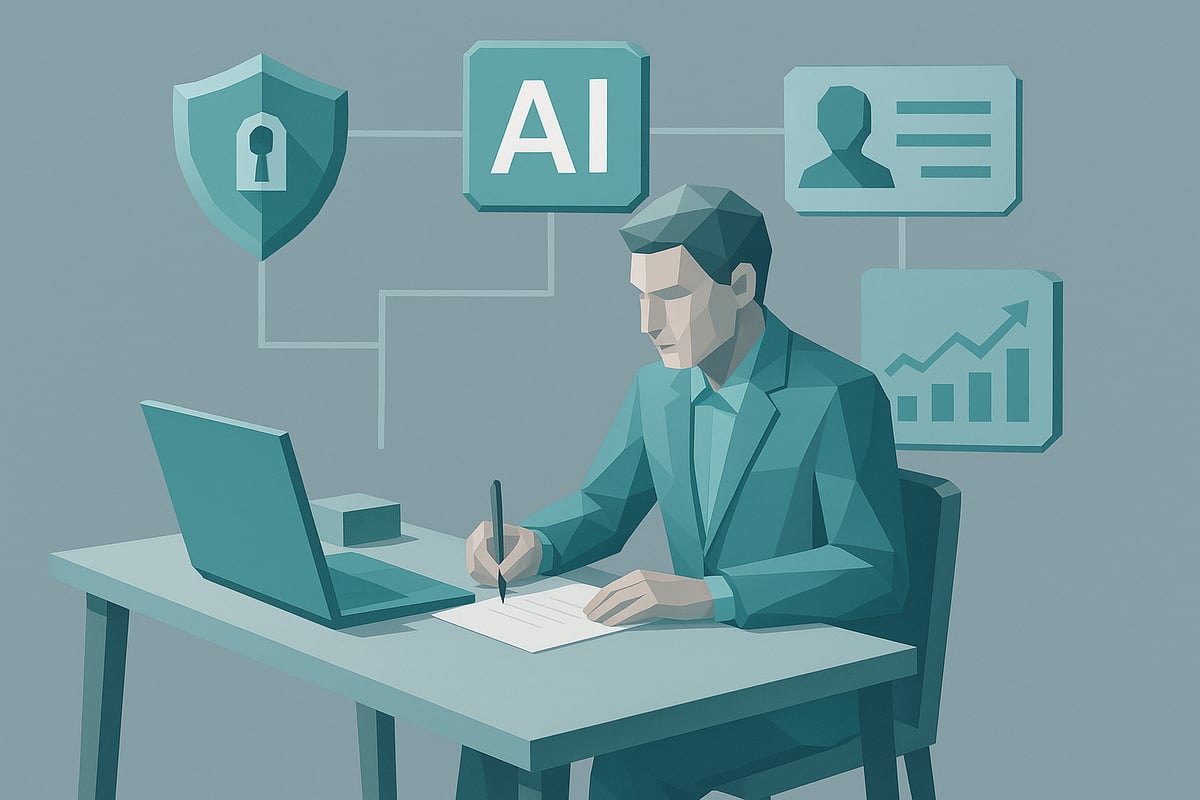
1. Maintain Authenticity
Let your unique voice shine through every application letter ai draft. While AI can generate a strong foundation, personalize the content by weaving in your own experiences, values, and professional achievements. Authenticity builds trust with employers and helps your letter resonate.
Review AI-generated content for tone and alignment.
Replace generic phrases with specific examples from your career.
Share personal motivations that connect you to the company.
2. Avoid Over-Reliance on AI
AI tools are powerful, but they can sometimes produce robotic or repetitive language. Always review drafts critically. Add your insights, adjust phrasing, and double-check for nuances that only you can provide.
Look for overused buzzwords or clichés.
Use the Best resume keywords for industry jobs to strategically tailor your application letter ai for both ATS and human readers.
Vary sentence structure and inject your personality.
3. Uphold Ethical Standards
Transparency is essential when using application letter ai. Be honest about your skills and experiences. Avoid exaggeration or false claims, even if the AI suggests them. Ethical integrity not only protects your reputation but also aligns with employer expectations.
Cross-check facts and dates.
Disclose AI assistance if required by the company.
Refrain from copying content directly from public sources.
4. Safeguard Your Data Privacy
When using application letter ai platforms, prioritize your privacy. Only use trustworthy AI tools that offer clear data protection policies. Never share sensitive personal information beyond what is necessary for generating your application letter.
Opt for platforms with robust encryption and privacy settings.
Avoid uploading confidential documents unnecessarily.
Regularly review and update your data sharing preferences.
5. Commit to Continuous Improvement
Application letter ai is most effective when combined with ongoing learning and feedback. Use analytics from AI platforms to track your application’s performance. Seek input from mentors or peers, and revise your letters based on constructive criticism.
Analyze which letters get more responses or interviews.
Adjust keywords and structure as needed.
Stay updated with the latest AI features and best practices.
Success Story: Responsible Use in Action
Consider Priya, a marketing professional who leveraged application letter ai responsibly. By combining AI-generated drafts with her personal achievements and targeted keywords, she increased her interview rate and received positive feedback for her authentic tone. Priya also ensured her data was secure and never misrepresented her skills, resulting in a seamless hiring process.
Best Practices Summary Table
Best Practice | Impact on Application Letter AI | Result |
|---|---|---|
Personalization | Tailors content to job and company | Higher engagement, 95% ATS pass rate |
Ethical Honesty | Maintains integrity | Builds employer trust |
Data Privacy | Protects personal information | Reduces risk of data misuse |
Continuous Feedback | Refines and improves applications | Better interview outcomes |
By following these best practices, you can fully harness the power of application letter ai while ensuring your applications are distinctive, ethical, and secure.
Top AI Tools and Platforms for Application Letter Writing in 2026
Navigating the landscape of application letter ai solutions in 2026 can feel overwhelming, given the rapid evolution of platforms and features. Today's job seekers expect more than just templates—they want intelligent assistance, real-time feedback, and seamless integration into their job search workflow. With so many choices, understanding the strengths and differences of each tool is essential for crafting standout letters that get noticed.
Comparing Leading Application Letter AI Platforms
The top application letter ai platforms in 2026 deliver a mix of automation, customization, and user-centric design. Below is a comparison of the most popular tools among job seekers:
Platform | Key Features | Pricing | User Rating |
|---|---|---|---|
Template.net | AI templates, ATS check, export | Free/Premium | 4.7/5 |
Jasper | Content generation, tone adjust | Subscription | 4.8/5 |
Grammarly | Grammar, clarity, tone | Free/Premium | 4.6/5 |
CareerConcierge.io | All-in-one, ATS, analytics | Free/Premium | 4.9/5 |
These platforms streamline the application letter ai process, making it easier to tailor each letter for specific roles and industries.
Key Features That Set Top Tools Apart
Choosing the right application letter ai platform means evaluating features that boost both efficiency and results. Look for:
Customizable templates for different industries and job levels
ATS optimization to increase pass rates with automated keyword suggestions
Real-time editing for instant grammar, style, and formatting checks
Integration with job boards and resume builders
Analytics dashboards to track letter performance
These capabilities ensure your application letter ai solution not only saves time but also delivers measurable improvements in interview rates.
Pricing Models and User Value
Application letter ai tools typically offer a mix of free basic plans and premium subscriptions. Free versions provide access to essential templates and checks, while paid plans unlock advanced personalization, unlimited credits, and analytics. All-in-one solutions can lead to significant monthly savings. According to the PwC 2025 Global AI Jobs Barometer, job seekers can save up to €61/month by consolidating multiple AI tools into a single subscription, making these investments both practical and cost-effective.
Case Study: Success with Application Letter AI
Consider Julia, a recent graduate applying for marketing analyst roles. She used CareerConcierge.io to generate tailored application letters, leveraging its ATS checker and AI-driven personalization. After submitting five AI-optimized letters, Julia secured three interviews within two weeks. Her experience reflects a growing trend, as application letter ai platforms empower users to stand out in competitive markets and land interviews faster.
Tips for Choosing the Best Application Letter AI Tool
To maximize results, keep these tips in mind when selecting your application letter ai platform:
Match features to your needs: Prioritize ATS compatibility and customization
Check user reviews: Look for high satisfaction and support
Consider free trials: Test functionality before committing
Evaluate privacy and data security: Ensure your information is protected
Stay updated: Choose platforms with frequent updates and responsive support
Selecting the right application letter ai tool can transform your job search, helping you craft compelling letters with confidence and efficiency.
The Future of AI in Job Applications: Trends to Watch for 2026 and Beyond
Artificial intelligence is propelling the job application process into uncharted territory. By 2026, the landscape for candidates and employers will look dramatically different, with application letter ai at the heart of this transformation. What can job seekers expect as the future unfolds?
Predictive Analytics and Smarter Matching
AI is evolving from reactive tools into predictive engines. Next-generation application letter ai platforms will analyze not only your experience but also industry trends, market demand, and hiring patterns. These systems recommend roles that best fit your unique profile, increasing your chances of landing interviews. According to the BLS Employment Projections on AI Impact, roles in AI-affected sectors are expected to grow, emphasizing the value of AI-driven job search tools.
Seamless Integration with Job Boards and Career Sites
In 2026, application letter ai won’t be limited to standalone platforms. Instead, AI-powered writing assistants will be embedded directly into major job boards and company career pages. Imagine drafting and optimizing your letter as part of the application flow—without switching between platforms. This integration streamlines the process and ensures that every submission meets employer standards.
Hyper-Personalization and Authenticity
Today’s AI can tailor content, but tomorrow’s application letter ai will deliver hyper-personalization. Systems will assess soft skills, company culture, and even communication style, crafting letters that feel genuinely human. With nuanced language and context-aware phrasing, your application will resonate more deeply with hiring managers, setting you apart from generic submissions.
Voice, Video, and Multimedia Applications
The future of application letter ai extends beyond text. Advanced tools will generate voice introductions, video summaries, or even interactive portfolios tailored to specific roles. This multimedia approach lets candidates showcase their personality and skills in new ways, appealing to employers seeking a more holistic view.
Evolving ATS Algorithms and Real-Time Feedback
Applicant tracking systems are adapting quickly. AI-driven ATS will not only scan for keywords but also evaluate tone, structure, and fit. Some platforms already provide real-time feedback on your application letter ai, alerting you to improvement areas instantly. Emerging tools even simulate interview scenarios, giving candidates actionable insights before they ever meet a recruiter.
By the Numbers: The AI-Driven Application Era
Trend | Statistic/Projection |
|---|---|
Apps managed by AI platforms | 80% by 2026 |
ATS pass rate for optimized letters | 95% |
Interview rate boost | Up to 3x with AI-personalized applications |
As the Pew Research Center Report on AI and Workers notes, workers increasingly view AI as a necessary partner in career advancement, not just an optional tool.
Staying Ahead: Tips for Job Seekers
Embrace continuous learning on new features in application letter ai tools.
Regularly update your skills and digital presence.
Experiment with multimedia formats to stand out.
Seek feedback from both AI and human mentors to refine your applications.
The future of application letter ai is dynamic and filled with opportunity. By staying informed and adaptable, you can harness these trends to craft compelling, future-proof applications—ensuring your job search success in 2026 and beyond.
Now that you know how AI can transform your application letters for 2026, why not put these strategies to work for your own career journey? With CareerConcierge.io, you have an all in one platform designed to help you craft tailored, ATS friendly resumes and cover letters, streamline your job search, and boost your chances of landing more interviews. Whether you are just starting out or making a big career shift, you can save valuable time while making your applications stand out. Ready to see the difference for yourself?
Start for free
